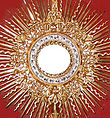
Back Franciskus van Assisi Afrikaans Franz von Assisi ALS Sant Francisco d'Asís AN فرنسيس الأسيزي Arabic فرانسيس الاسيزى ARZ Franciscu d'Asís AST Francesco d'Assisi Aymara Assizli Fransisk Azerbaijani Franz vo Assisi BAR Šv. Prancėškos Asīžėitis BAT-SMG
Francis of Assisi | |
|---|---|
 A painting of Saint Francis[a] by Philip Fruytiers | |
| Founder of the Franciscan Order Confessor of the Faith and Stigmatist | |
| Born | Giovanni di Pietro di Bernardone 1181 Assisi, Duchy of Spoleto, Holy Roman Empire |
| Died | 3 October 1226 (aged approximately 44 years) Assisi, Umbria, Papal States[4] |
| Venerated in | |
| Canonized | 16 July 1228, Assisi, Papal States by Pope Gregory IX |
| Major shrine | Basilica of San Francesco d'Assisi |
| Feast | 4 October |
| Attributes | Franciscan habit, birds, animals, stigmata, crucifix, book, and a skull |
| Patronage | Franciscan Order, poor people,[5] ecology; animals; stowaways; merchants; Aguada, Puerto Rico; Naga, Cebu; Buhi, Camarines Sur; Balamban, Cebu; Dumanjug, Cebu; General Trias, Cavite and Italy |
| Part of a series on |
| Christian mysticism |
|---|
 |
| Part of a series on |
| Eucharistic adoration of the Catholic Church |
|---|
 |
| Papal documents |
| Organisations and events |
| Notable individuals |
| Eucharistic meditators |
|
|

Giovanni di Pietro di Bernardone (c. 1181 – 3 October 1226), known as Francis of Assisi,[b] was an Italian[c] mystic, poet, and Catholic friar who founded the religious order of the Franciscans. Inspired to lead a Christian life of poverty, he became a beggar[7] and itinerant preacher.
One of the most venerated figures in Christianity,[8][4] Francis was canonized by Pope Gregory IX on 16 July 1228. He is commonly portrayed wearing a brown habit with a rope tied around his waist, featuring three knots symbolizing the three Franciscan vows of poverty, chastity, and obedience.
In 1219, he went to Egypt in an attempt to convert the sultan al-Kamil and put an end to the conflict of the Fifth Crusade.[9] In 1223, he arranged for the first live nativity scene as part of the annual Christmas celebration in Greccio.[d][10][11] According to Christian tradition, in 1224 Francis received the stigmata during the apparition of a Seraphic angel in a religious ecstasy.[12]
Francis is associated with patronage of animals and the environment. It became customary for churches to hold ceremonies blessing animals on his feast day of the fourth of October, which became World Animal Day. He was noted for his devotion to the Eucharist.[13] Along with Catherine of Siena, he was designated patron saint of Italy. He is also the namesake of the city of San Francisco.
September 17 is the feast of Francis' stigmatization.[14]
- ^ Bryner, Jeanna (10 September 2007). "Tunic Worn by Saint Francis Identified". LiveScience. Retrieved 18 December 2023.
- ^ Wolf, Kenneth (March 2003). "St. Francis and His Tunic". Oxford Academic. Retrieved 18 December 2023.
- ^ Graves, Jim (22 March 2019). "7 Religious Talk About the Habits They Wear". National Catholic Register. Retrieved 18 December 2023.
but our habits are comfortable to wear
- ^ a b Brady & Cunningham 2020.
- ^ Pavia, Will (14 March 2013). "St Francis of Assisi: patron saint of the poor". thetimes.co.uk. News Corporation. Retrieved 29 May 2023.
- ^ Brooke 2006, pp. 161–162.
- ^ Zielinski, Karen (23 January 2019). "Begging like St. Francis". Global Sisters Report.
- ^ Delio 2013.
- ^ Tolan 2009.
- ^ Martindale, C. C. (1908). . Catholic Encyclopedia. Vol. 3.
- ^ Robinson, Paschal (1909). . Catholic Encyclopedia. Vol. 6.
- ^ Cite error: The named reference
ODCC Franciswas invoked but never defined (see the help page). - ^ "St. Francis of Assisi – Franciscan Friars of the Renewal". Franciscanfriars.com. Archived from the original on 15 December 2019. Retrieved 24 October 2012.
- ^ "Feast of the stigmatization of Francis of Assisi".
Cite error: There are <ref group=lower-alpha> tags or {{efn}} templates on this page, but the references will not show without a {{reflist|group=lower-alpha}} template or {{notelist}} template (see the help page).